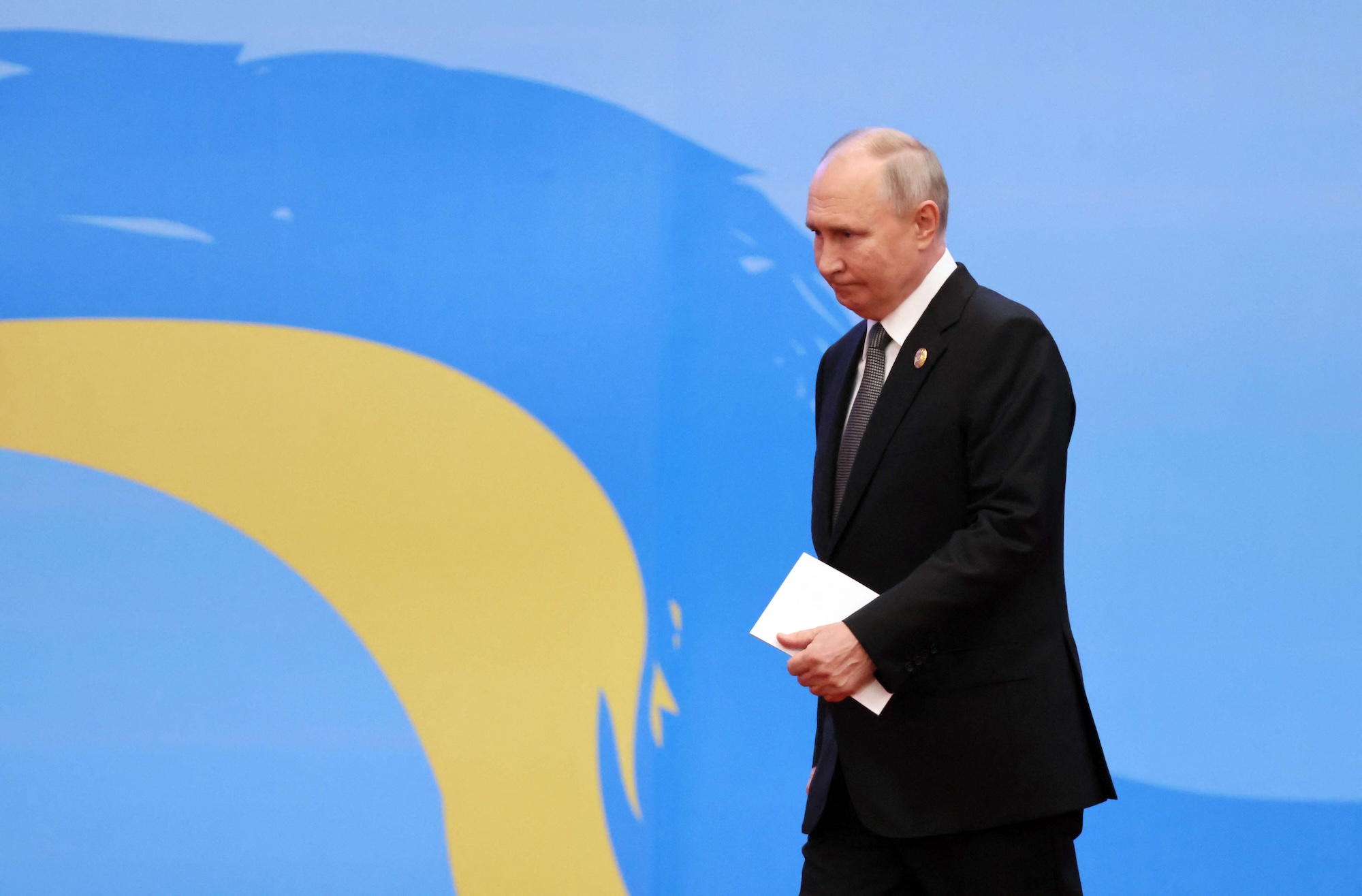
Ignorance fosters fear. Fear breeds hatred. Hatred leads to destruction.
Civil rights activist Daryl Davis identified this cycle through his work engaging Ku Klux Klan members, leading hundreds to leave the organization.
While his approach was personal, the broader lesson applies to international conflicts, including Ukraine. Fear, rooted in ignorance and historical grievances, has driven the key actors in this war.
Understanding these fears is critical to de-escalation and resolution.
Security Dilemma and Roots of Fear
Before analyzing the conflict, it’s essential to understand how the “security dilemma” fuels fear.
In an anarchic international system, uncertainty about others’ intentions is inevitable, and defensive actions can easily be misinterpreted as acts of aggression.
However, diplomacy — through dialogue, guarantees, agreements, treaties, and international organizations — helps reduce this uncertainty.
Ukraine’s and Donbas’ Fears
Ukraine’s fear of Russian influence stems from centuries of domination, both political and cultural.
Since gaining independence in 1991, Ukraine has sought to solidify a national identity, while many Russian-speaking Ukrainians identified with the Russian language and culture.
This divide fostered ignorance, leading Ukraine to fear Russian-speakers’ loyalty, and the latter fearing marginalization.
Pro-Russian President Viktor Yanukovych rejected development with the West, reviving fear of returned Russian domination.
The turmoil led to the 2014 Maidan Uprising, and the removal of Yanukovych fueled separatist sentiment in Donbas.
In turn, Kyiv’s policies restricting Russian-language media and education heightened fears among these populations, deepening the divide.
Hate became visible and led to destruction in Ukraine, exacerbated by Russia’s annexation of Crimea, emboldening separatist movements.
Despite its stated support for international equality and state sovereignty, Russia ultimately chose to invade. It failed to meaningfully engage neutral entities and denied Ukraine the right to determine its own future. In response, Ukraine cracked down on groups seen as sympathetic to Russia.
What started as mutual ignorance transformed into fear, hardened into hatred, and finally erupted into destruction.

Russia’s Fears
Just as Ukraine perceives Russia as a historical threat to its sovereignty, Moscow views the West, and especially NATO’s expansion, as an existential threat to its security.
In a 2007 speech in Munich, Vladimir Putin warned of NATO expansion “[reducing] the level of mutual trust,” indicating a growing level of ignorance of NATO’s intentions. Putin further claimed that President Bill Clinton supported Russia joining NATO, but then rejected it.
To Russia, their rejection — while welcoming other former Soviet republics — suggested NATO existed to oppose Russia regardless of its government.
When Ukraine expressed NATO ambitions, Russia saw this as a direct security threat, particularly given Ukraine’s strategic position. The Trump administration’s withdrawal from the Intermediate-Range Nuclear Forces Treaty further exacerbated Russian fears of US missiles stationed in Ukraine.
Unlike Sweden and Finland, Crimea’s disputed status posed a risk of triggering NATO’s Article V. Volodymyr Zelensky declared Ukraine would reclaim Crimea, and the US reinforced this stance by signing a Strategic Partnership recognizing Crimea as Ukrainian.
This created uncertainty — would even a limited Russian response to a Ukrainian attack on Crimea, within Crimea itself, be considered aggression?
To Russia, this made Ukraine’s NATO membership unacceptable. Meanwhile, Ukraine’s heavy shelling of Donbas in January 2022 was seen as an escalation, and Russia justified its invasion as a necessary act of self-preservation.
Regardless of NATO’s intentions, its failure to address Russian fears made its actions appear hostile, completing the cycle from ignorance to destruction.

The West’s Fears
Clinton’s rejection of Russia joining NATO was understandable. Unlike Germany and Japan after World War II, Russia was never occupied, making it harder to influence its future direction. Empowering Russia today could mean empowering an enemy tomorrow.
This concern was especially valid given the recent Cold War rivalry and Europe’s long history of conflicts with the Russian Empire.
Additionally, Russia’s inclusion could have threatened US dominance in the West. As Western leaders remained uncertain about Russia’s intentions, their uncertainty turned into fear.
For the West, Ukraine’s new government was legitimate, and Crimea’s annexation had no justification.
Russia’s violation of international law, challenge to the Western-led order, and escalation of the conflict fueled fears of an expansionist Russia. As Russia disrupted the West’s idealized vision of post-Cold War peace, fear turned into hatred.
Breaking the Cycle
Was NATO acting offensively? Was Russia? Or were both caught in the security dilemma, driven by ignorance and fear, with Ukraine trapped in the middle? Davis’ observation of ignorance progressing into destruction supports this view.
Ukraine viewed Russia’s historical influence and its Russian-speaking population as threats to its national identity. Russian-speaking Ukrainians resented the government for their marginalization. The West resented Russia for challenging the liberal rules-based order and pursuing what it saw as revanchism. Meanwhile, Russia resented the West for its perceived hypocrisy and disregard for Russian interests.
In the end, this escalating hostility led to destruction. Fear of conflict became a self-fulfilling prophecy.
Rather than dismissing opposing views, activist Davis engaged with respect, understanding that perceptions — however flawed — are more influential than reality. His success in converting Klansmen from hate came not through force or condemnation, but by listening and seeking to understand.
Similarly, dismissing Russian security concerns as mere whataboutism is counterproductive, reinforcing Russian narratives of Western hypocrisy. At the same time, Russia’s disregard for Ukraine’s interests fuels Ukrainian radicalism, while actions like the annexation of Crimea strengthen the perception of an expansionist Russia.
Davis once said, “When two enemies are talking, they’re not fighting. They might be yelling and screaming, but at least they’re talking. It’s when the talking ceases that the ground becomes fertile for violence.”
Dialogue is essential, but words alone are not enough — action must follow.
To move toward peace, Ukraine should lift Zelensky’s ban on negotiations with Putin, while Russia must acknowledge Zelensky’s leadership, even if it questions his legitimacy. Only then can meaningful talks begin, both to end the war and to address broader Russian and Western security concerns.
More challenging, Russia must respect Ukraine’s sovereignty, agree to security guarantees, and avoid excessive demands for Ukraine’s demilitarization.
Ukraine, in turn, must work to de-radicalize “neo-Nazi” groups based on criteria set by a neutral entity, perhaps the UN, and repeal laws that discriminate against Russian speakers.
The West must facilitate a security framework that addresses Russian concerns while lifting sanctions.
These are tough first steps. No side will walk away fully satisfied, but with hatred having escalated into destruction, pragmatic compromises without forcing ideological concessions are necessary to achieve lasting peace.
The alternative — continued destruction — only ensures a legacy of resentment and further conflict.
A resolution will not come easily, but as Davis demonstrated, the first step is always the same: listen, understand, and break the cycle of fear before it becomes irreversible.
 Joshua Grunske is an independent academic researcher specializing in Russia and Ukraine, international conflict, genocide, and political psychology.
Joshua Grunske is an independent academic researcher specializing in Russia and Ukraine, international conflict, genocide, and political psychology.
He is a contributing co-author to the academic book Serfs, Soldiers, Citizens: Military Effectiveness and the Social Contract.
The views and opinions expressed here are those of the author and do not necessarily reflect the editorial position of The Defense Post.
The Defense Post aims to publish a wide range of high-quality opinion and analysis from a diverse array of people – do you want to send us yours? Click here to submit an op-ed.










